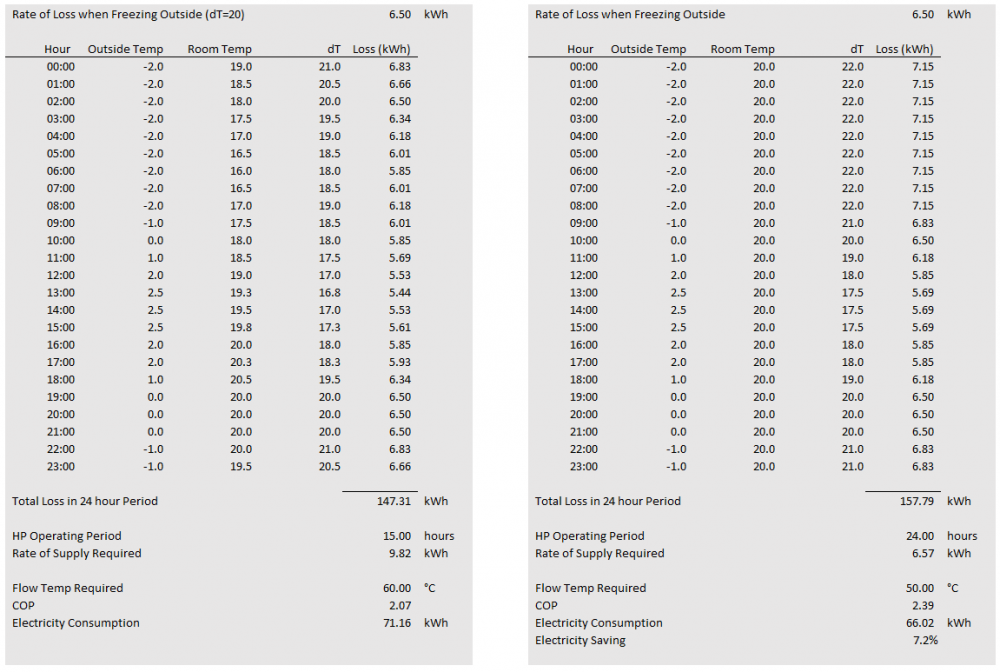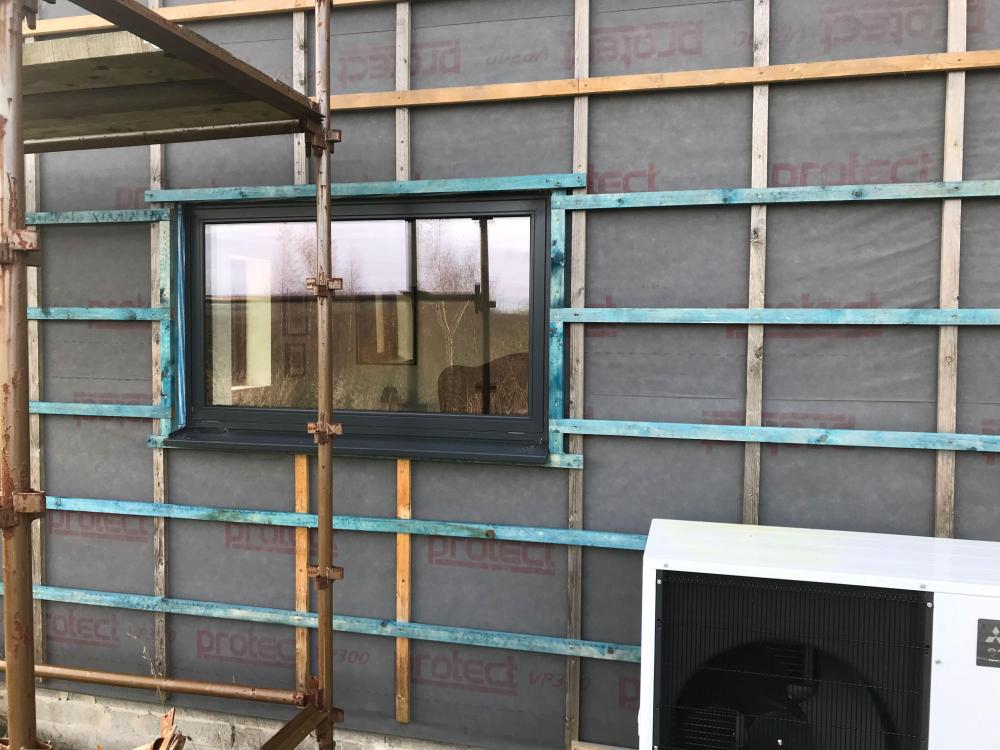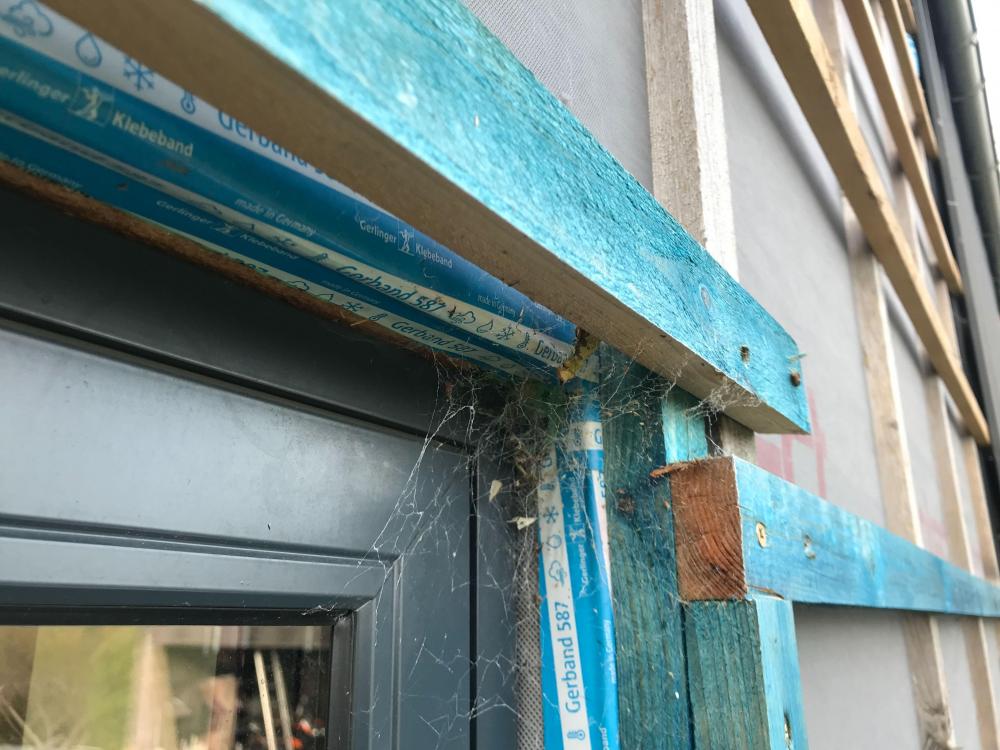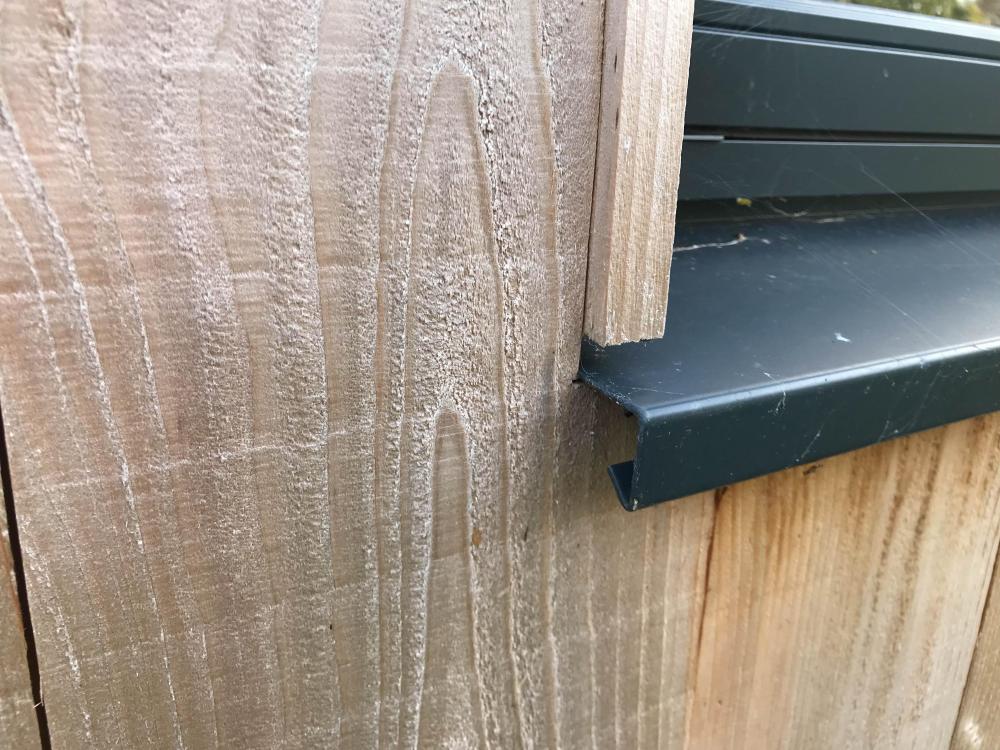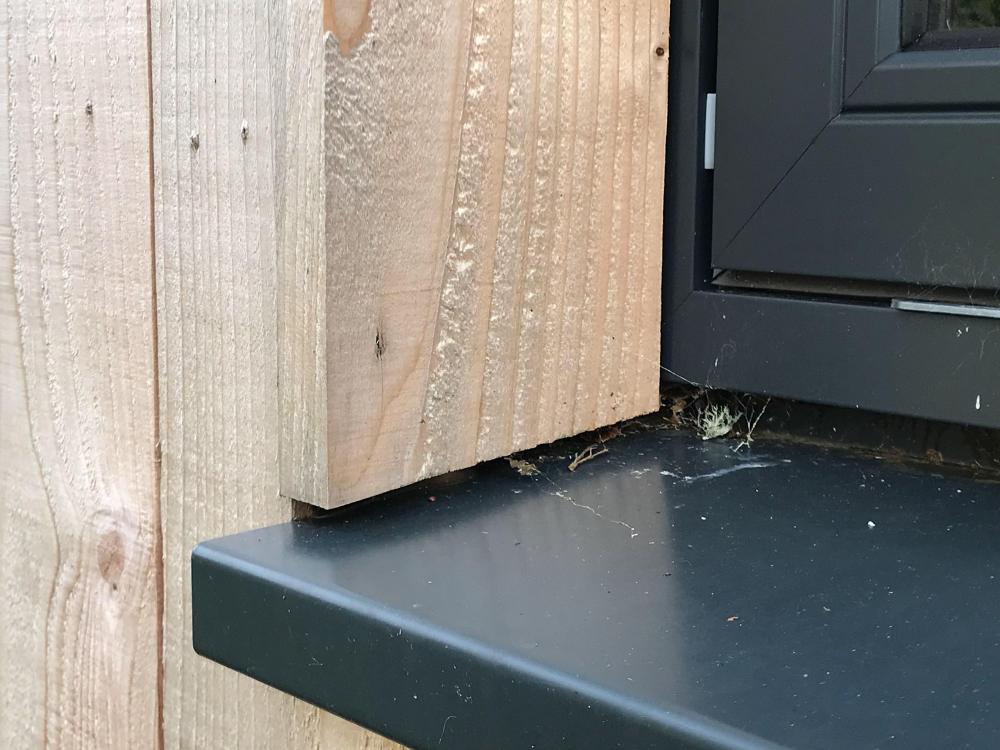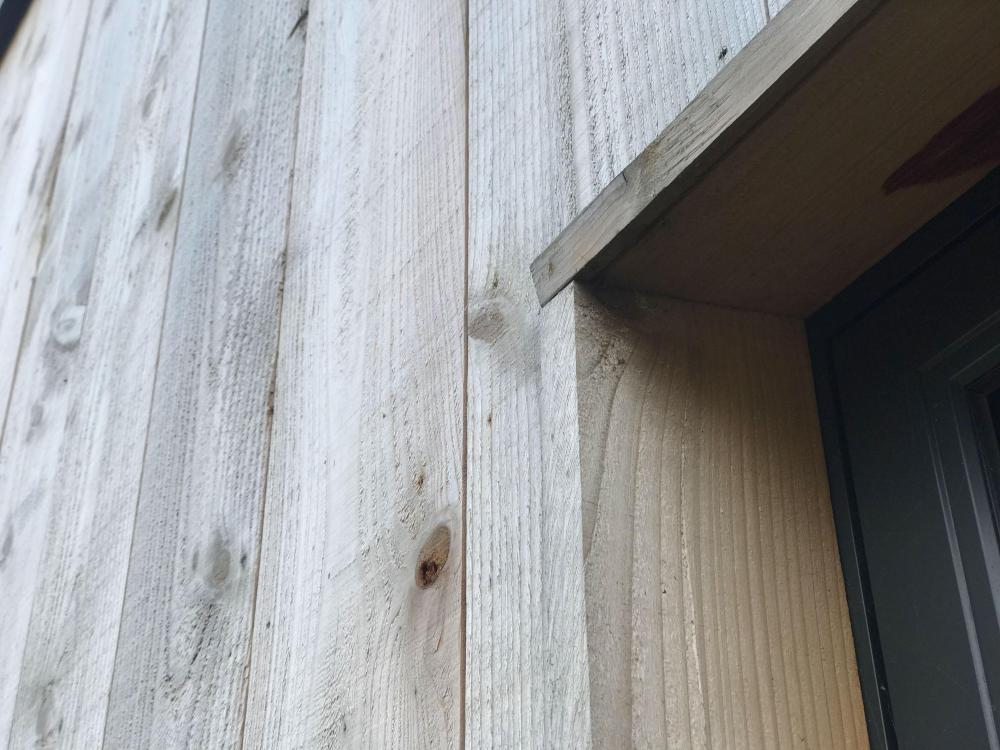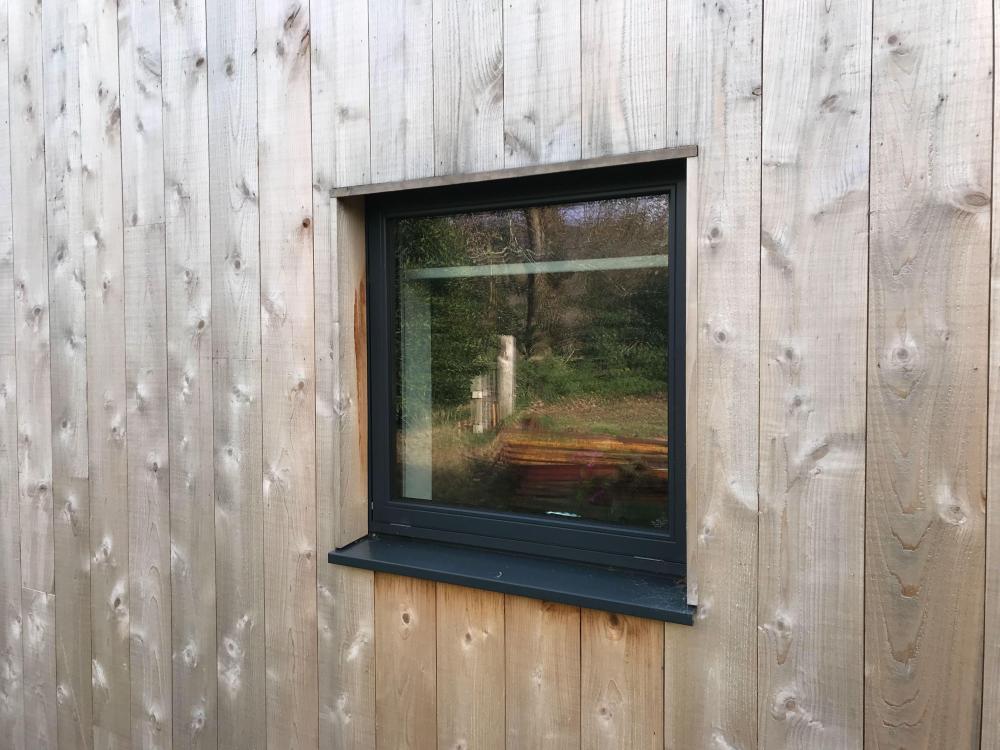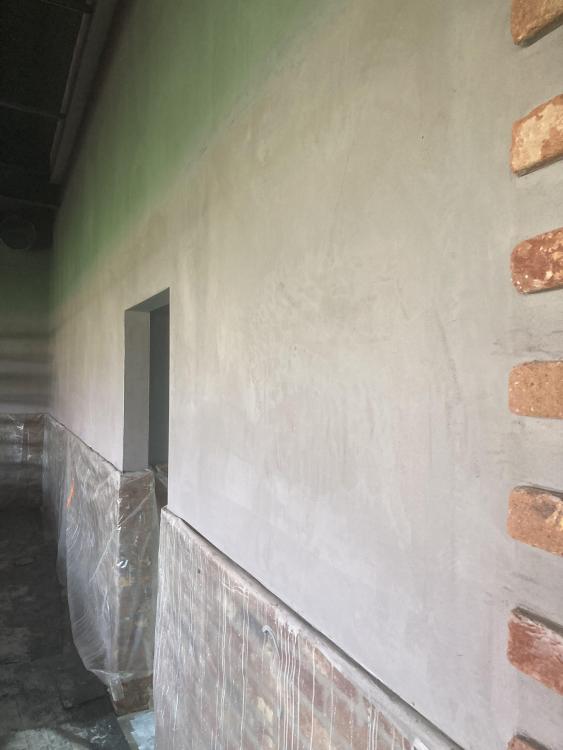Leaderboard
Popular Content
Showing content with the highest reputation on 11/29/21 in all areas
-
Gaps are completely unacceptable. Building Inspector will understand and agree, but may not wish to be involved in your contract dispute. Damage is careless and a concern re standards throughout, but barely affects the insulation level. If you allow the use of foam spray fill, will you trust them to get it to full thickness yet not fill the void? I would be concerned re their attitude and attention to detail. There is no reason to expect that your builder will understand the science of insulation. Sometimes they just have to be told. I have many a story on this, but not now.2 points
-
Can you talk on the phone to BCO and if he is on side, ask him to meet with the builder on site to discuss?2 points
-
I agree, if it were me I would buy a foam gun (better control than foam from a can) and foam all those gaps trying to not let too much foam go too far back, trim the next day. Cold air through those gaps will deplete the u value a lot. (Doing this will not piss your builder off either ?).2 points
-
If the staircase is well secured, use a long piece of 6" x 2"and attach one end to the wing of the tread support with screws or bolts through the fixing holes, then lever up or down. Archimedes is your friend here, not brute force.2 points
-
Ah the "propellers" are so small and insignificant looking and on the back of the "kite" that I missed them the first time I looked, and just saw the kite with no aparent moving parts. Should have gone to ...........2 points
-
Can't speak for that one but we went on one run by Potton the timber frame people. It was free! We are doing a traditional build but the principles of project management are the same for both. We found it very helpful. We have, since, gone on to project manage our new build bungalow.2 points
-
You would like to connect PV panels - without an inverter - to an immersion heater? Bad plan. 1) The inverter isn't just making AC. It's also doing MPPT tracking (max power point tracking) so ensure that the "load" seen by the PV panels results in the highest possible generation from the panels. Direct connection won't have this. 2) Value for money. I also have a rubbish PV array - 2 strings of secondhand panels in bad orientations connected to a secondhand 2 string inverter. It saves far more money running the fridge / internets / mhvr / computer (and sometimes air conditioner) during the daytime than you'll save by doing diversion to an immersion heater. Buy a little inverter and hook up to the mains to divert to either fridge/internets (most of the time) in my view. https://midsummerwholesale.co.uk/buy/sofar-inverters/sofar-1100-tl-g3 Registration...? ? Buying an "island mode" inverter just for an immersion feels like a waste of perfectly good PV that could be running your office and A/C during the summer. (or charging a car etc)2 points
-
Greetings! Apologies for the crass title but I am still a kid at heart. ? After a brief delay due to Covid-19 the carpenters were able to attend site and erect our timber frame. Thanks to the accuracy I insisted on and ensured for the coursing blocks the sole plates were a doddle and were done in no time at all although we did have a bit of rain and I had to get the puddle pump out! We used Flight Timber for our timber frame and they have their own lorries with cranes built in and so each stage of the build was delivered by the lorry and then craned in to place. Here’s the ground floor panels arriving. It took them just 2 days to finish all the ground floor external and internal wall panels. The speed of it all is very impressive. Then the posi-joists arrived These took a few days to do but thanks to the 8mm designed deflection and 300mm centres they are rock solid even across the 6.2m spans. It’ll be a bit of a nightmare trying to run MVHR, electrics and plumbing but we won’t have any bounce on the floors! Plus when the sun shines through it creates some lovely lighting effects Next we had a weeks delay as Flight didn’t have any chipboard flooring in stock as they were let down by their suppliers. This was a frustrating delay but with the current material shortages not one that I should really grumble about too much. It was eventually delivered and the chippies got on with laying it and the first floor panel starter plates. And then it was on to the first floor wall panels. These took 2 days to do as well and so within a couple of weeks of starting we had both floors done ready for the attic trusses They were also a couple of days delayed due to Covid-19 but arrive they did They didn’t take long at all to go up and I love the symmetry of them Then it was another week or so getting the roof finished and building the vaulted ceiling in our entrance hall etc and then they were done! It was 18 days on-site from start to finish. Amazing to see. I took some time-lapse footage and you can see the video below: And so we have a superstructure! The roofer is not far behind so my next blog will be about the roof slates and Solar PV array. Thanks for reading and until next time…1 point
-
Which is of course why building regulations demand a room containing a stove and a room that the flue passes through, have CO alarms. I trust those to let me know if something has gone wrong.1 point
-
Not worth it IMO. 15 litres for 11 hours at 1875 watts. Probably won't be much less at part load as efficiency falls off a cliff. Noisy as all heck. Would you actually use it? Do you drive? A modern car probably burns <0.5 litres per hour at idle, comes with a 50+ litre tank for 100+ hour runtime, has far cleaner exhaust emissions than any genset will, and is probably quieter. Alternators will do about 100A at 14.5V. perhaps a little less at idle. Easily 500W. Maybe 1000W. More than enough for "the essentials" as it were. Buy yourself an inverter: https://www.beal.org.uk/inverters.html (they lie about their true ratings - I'd go for 3 kW and assume that it can do 1 kW continuous...) Buy yourself some Anderson connectors to hardwire onto your car battery: https://www.beal.org.uk/anderson-connectors.html Choose where to put the inverter (on top of something to keep it out of the water, under something to keep it out of the rain, and close to the 12V battery) and add the appropriate amount of cable. Cars with 12V batteries in the boot are handy. And buy yourself an earth rod and one of those "caravan hookups" that have an RCD and MCB etc in it to power the house. This was my answer when looking at generators. Standalone kit is rubbish. You're absolutely laughing if said car is a hybrid with a DC-DC converter between the main pack and the 12V pack that'll auto-start itself to recharge occasionally. If I were to do an off-grid build a smacked-up Toyota Prius costs pennies for what you're getting... https://www.plugoutpower.com/1 point
-
Need to throw in system size as well. There is a big difference in suppling, say 55°C water, from a 5 kW unit and a 15 kW unit, regardless of weather.1 point
-
Their service is supposedly good, but they do seem to sometimes have issues getting meters installed. Normally this is an issue as they put people on a more expensive tariff until they get a smart meter installed. Many customers want the Octopus Go tariff. At the moment, however, this is less of an issue as the standard variable tariff is the best tariff that you can get (Octopus Go may be cheaper if you can displace a large amount of demand to during the night)1 point
-
Remedy the problem yourself with foam and tape then Give the builder a friendly telling off-and keep an eye on progress from now on and make sure he knows you are inspecting things in future.1 point
-
The cladding was fixed with hidden pins so the staggered battens didn't affect it. The counter battens were sloped slightly to the side so if any moisture got behind the membrane it would run off onto the lower counter batten.1 point
-
Probably too late but you should have got every floor/wall signed off prior to plasterboarding/ flooring to allow inspect and remedy any defects before the builder hides them forever1 point
-
Yes, I suppose it is, but at the same time, the customer is entitled to request any element of a build is as it should be, and should not really be having to go around after the "professionals" doing remedial jobs. At the end of it all, no matter how it's viewed, this is arguably the most valuable asset anyone owns, and if someone is going to the enormous aggro of building their own home, they are well within their rights to want it done "as it should be done". I'd sort these gaps myself yes, but I'd let the builder know I was going to do that. I'd also let him know I expect critical elements of the work to be done well, and by done well, I mean AS IT REALLY OUGHT TO BE, and not as most customers may accept it being. To add.... as I hadn't read the last few posts... Yes, BCO is a good shout, as is a discussion with Kingspan technical. You'll know where you are then for sure.1 point
-
1 point
-
After the supply is put in you need to contact a supplier who will arrange for a meter install. For a new supply I have found the larger suppliers such as EON or EDF to be better at organising the meter install. I would make sure that they can install a smart meter for three phase, not everyone has been historically, but it should be OK now. At the moment you will just need to sign up to the standard variable tariff as their fixed tariffs are considerably more expensive. You can sign up to an export tariff, but only with a smart meter that measures your export. The payments are outrageously low relative to the current price of electricity 3-5.5p depending on who you sign up with. This is a separate sign up to your electricity supplier. It is much better to try and sue all your PV generation to offset electricity at 21p/kWh. You can get meter prices with Octopus Agile Outgoing, but I see you cannot mix that with Octopus Go (It doesn't mention Intelligent Octopus). Don't sign up to Octopus Agile for incoming electricity, prices are crazy at the moment.1 point
-
@MikeSharp01, and others interested on open-source home automation, this might also interest you, this time regarding the Thread mesh-networking technology: "OpenThread released by Google is an open-source implementation of Thread technology, based on the draft Thread 1.1 specification." https://www.threadgroup.org/support#OpenThread https://openthread.io1 point
-
I have never really seen the advantage of an overcomplicated system like this. Tidal stream turbines are simple, and work, and they are always in the same position that you leave them. There are a limited number of places this sort of technology can be installed. You need relatively shallow water, with a greater depth and therefore volume, either side. Then not in an area with large mammals and fish, not in a busy shipping area, though shipping tends to avoid tidal races, not is a fishing, or potting area, somewhere that is not disturbed by large waves, you don't want suspended sand or silt either. If we are to develop tidal power, tidal lagoons are probably the best available technology at the moment. People should learn lessons from Wave Hub.1 point
-
This will let the builder know you are keeping an eye on the him / standards, if you don’t want to do it then tell the builder to foam the gaps as you find that unacceptable, this is a bit like the dot and dab debate, air leakage causing heat loss problems. This is a reason why most here (like me) don’t think most builders understand passive build techniques which a lot of the time are down to the small details.1 point
-
1 point
-
Like we have said, get a foam gun and a few cans of foam and spend an hour having a good squirt. By the end of the hour you should be good at using the gun. Leave the can in the gun after use. Total cost will be less than £50.1 point
-
As a turnkey package then the contractor walking away is unlikely, the labour on the other hand is very likely leaving you with possible delays etc. of course you are aggrieved, just try to find an amicable solution rather than going in all guns blazing as you have a long way to go. Tell them that you are not happy and are going to try to rectify the problem yourself and you will deduct the cost at the end …. This could well spur them into sorting it out and being more diligent in future.1 point
-
As others have said, it'd be nice if the boards were butted together, but it's not an insurmountable problem. Get a foam gun, get some foam and some manky clobber on, and fill the gaps up yourself - good excuse to get hands on and do a bit. Start at one end of the space and work your way down to the other end. Might take you an hour or so, but it'll be worth it. Trim off the next day or in a few hours then tape it over, It'll then be ready for your foil, and next layer of board. May as well make a decent job of it, even if its going to be hidden behind tape, foil, board etc.1 point
-
@Hogboon, I've put together an hour-by-hour energy model based on 6.5kW heat loss as per the other thread and a hypothetical cold day with two operating scenarios: The first, on the left, assumes the heat pump is run between 7am and 10pm - 15 hours. The second, on the right, assumes the heat pump is run 24x7. The house loses heat to the outside whether it's being heated or not. The model shows that that allowing the house to cool overnight (by not running the heat pump) reduces the overall daily energy requirement of the house as would be expected. In this example on this made-up day it would need 147kWh. Substantially all of that energy - 147kWh - has to to come from the heat pump. Because the heat pump is being asked to provide 147kW with only 15 hours of run time, the radiator surface temperature must be increased from 50° to 60° to provide an extra 50% output to nearly 10kW (15 hours x 10kW = 150kWh), instead of the 6.5kW the system was designed and sized to provide. So, to have the house warm with only 15 hours run-time will need bigger radiators or a higher flow temperature. Compare that to a steady-state 20°C target. Over the same 24 hours, very obviously the overall heat demand is higher, in this case 158kWh for the 24-hour period. This is where things get interesting. If the heat supply was a gas boiler then of course it will be cheaper to heat it for 15 hours. It will use less energy and cost less. However, the heat-pump muddies this because it will harvest less energy from outside when supplying higher temperatures. The ratio between electrical supply and heat provided to the heating system is the COP. A COP of 3 would show that 3kW of heat are delivered to the water in the radiator circuit with 1kW of electrical input. The other 2kW are recovered by cooling the air outside. Because of the shortened operating time of 15 hours, the radiator temperature must be increased by 10°C. This reduces the COP, all else being equal. The datasheet for my particular product shows a reduction from 2.39 to 2.07 at -3°. Therefore, the amount of electricity required is actually more when operating the shorter heating period than just leaving it on 24 hours, in case about 7% more electricity to heat the house for 15 hours compared to heating it for 24. TL;DR: 15 hours is not enough time to heat your home with the radiators you have. Mid-season this can be achieved by increasing the flow temperatures to compensate but this will ultimately cost you more to run than leaving the system running 24x7. Run the heat pump 24x7 or change the radiators to achieve 50% more output.1 point
-
My frame had 600mm centres, underneath the membrane is 40mm Pavatherm so fixed vertical batten through to the studs. Horizontal battens at 400mm, cladding is western red cedar, about 195mm wide with a half lap. My window details took a few before I was happy. I put a 15 degree angle on the horizontal batten at the top of the window and cut a drip channel underneath the cladding. Fitted the reveals with the cill in place. Fitted some stainless steel mesh at top and bottom of batten just to keep rodents, insects out as much as possible.1 point
-
That’s why Joe’s suggestion is a good compromise, they are not doing re work but see that you are not happy and want the gaps filled. Yes you have to do something but that’s better than them walking away or getting really annoyed. A bit of give and take will get you a better build and much less aggravation.1 point
-
1 yes. 2 reasonably wide within ideal flow and return range. 3 a coil will hydraulically separate the ASHP from the rest. 4 I think a 2 port is really a volumiser and goes in series with a pipe, 4 port goes in parallel. Go 4 port. 5 don't know but would have thought so. No need to go via the buffer for DHW, but I think you know that from your earlier comment. 6 I think it depends on which way around it is plumbed, which would make it more of a thermal store. It also depends on how fast the discharge and recharge rates are i.e power out v power in. 7 no Idea, but I would have thought so. 8 I don't really know much about the nuts and bolts of installations, and I know that some things can seem counterintuitive in plumbing. Space heating and DWH are different things, at different temperatures and at different times. The more they can be separated the better in my opinion.1 point
-
Seems from Google that I should have been asked if I wanted 30 minute or 1 day readings. I have contacted my supplier to see if they can fix it. One thing I can see from the smart meter is that in the 6 weeks since it was installed I have only exported 11kWh vs around 200kWh generated. So during the winter I am using almost 100% of PV generation.1 point
-
Nothing wrong with fitting kitchen then laying flooring, but fit the end panels after the floor has been laid. flooring up to end panels looks terrible and is a water trap. Fit end panels with a couple of mm gap underneath to allow any water to dry without affecting the panels.1 point
-
No easy answer. The least hard is a grid tied inverter that complies with G98 and will generate no more than 3.68kW (you can have a larger capacity of panels connected to it) you have to notify that to the DNO under G98 but they cannot say no and there is no charge. The DNO is still stuck in the mindset that you might export all that is being generated. A DIY system won't allow you to get paid for any that is exported so the easiest way to avoid export is fit a solar PV diverter to send any excess to your immersion heater to heat your hot water a bit. That and your server should ensure you never export anything.1 point
-
I did a PM course at university. The lecturer seemed to be only half a page I front, and relied on us, older students to fill in gaps. Only new thing I learnt was not to use MS Project.1 point
-
I went on a project management course many years ago (different industry) and found it fascinating and became a project manager, I am sure it helped my build.1 point
-
You definitely don't want heat, unless you want to re paint the whole thing. If you have a heavy steel bar or a scaffold pole, I would just bolt it to the bent step and use the leverage it gives you to bend it back to shape. Nuts and bolts through the stair fixing holes.1 point
-
Good point, I don't have an acro but a piece of timber and a trolley jack might to the job.1 point
-
No need for heat, acro or jack underneath and push them up. ** do not whack it, that will cause paint damage and additional distortion. Slowly push them into place.1 point
-
Matter has a curious edge in its last objective: "Open: The Project’s design and technical processes should be open and transparent to the general public, including to non-members wherever possible." (Source: https://github.com/project-chip/connectedhomeip#readme) The whole nature of it hinges, for me, on those last 5-6 words although I appreciate the sentiment in which it is meant by accepting the fact that some aspects of the system will be propriety components. My worry is that it will be in these places we, those of us not intending to be members, will loose control of the data this system could generate / expose.1 point
-
There are loads of open source "standards" out there. The big issue is data capture. All those companies listed above want to be sure they gather their share of the data about how we live our lives. I suspect the problem with my connection to these bulbs, see thread here: is to do with the fact that I have them on a private network so although I can see them they cannot see the cloud so won't talk to me. I will play some more tomorrow but if they must speak to a cloud to work then they are going back. I am happy to dial into my own cloud service and then talk back to the house but I don't want my data shared by anyone unless on a shared / open basis. I swither about developing my own system but to make future proof without me would be problematic.1 point
-
Ended up buying an Intu in their black friday deal. Will report back and how it performs.1 point
-
I would think so but I would want to be sure. I suspect that pair of terminals just join to each other and nowhere else. Personally I would unscrew the boards and have a look at the pcb tracks to confirm that. I have a question. How do the room thermostats connect to that controller? I see no terminals? Is it all wireless?1 point
-
Latest update now really cold weather has hit us and some reasonable data points now in Sweet spot for heating is 4 degrees and above. Once you hit 3 for any length of time elec usage rises sharply.At zero degrees pretty much all day and night running costs are £5.45 day pellets would be £4.48. Suspect its defrost cycles causing the increased usage. Plus point however is that as they are 4 separate units they defrost at different times so you don't notice any heating drop. Running pellet boiler this week now to confirm usage of pellets is as I remember Overall still way cheaper to run than pellets but looking to maximise savings so hybrid running may well be the best solution overall. That said wouldn't be upset running A2A full time if didn't have pellet boiler in.1 point
-
I'm sure we will get over it but we just had our first kW of PV. ???1 point
-
Vermiculite is the common suggestion up to the thermal envelope. Ventilate with a vent at top and bottom of non filled space. If it's being enveloped in EWI could you consider removing the top down to the level of the thermal envelope e.g. first floor ceiling if cold roof,then sealing that in? Then,no need to fill and the space might become a useful service cavity e.g. for ducting.1 point
-
1 point
-
Flip the caps off the screws with a small flat blade screwdriver / similar. Deffo needs to come out and be done properly.1 point
-
Small tips - Check your order from the manufacturer - Check the delivery note and ALL materials when they get to site to ensure it is what you have ordered. - check the person doing the install knows what they need to do and what its suppose to look like - check the installation. Do all four and you should be fine, do 1-2 of these and you end up with 125mm cavity closers in 150mm cavity walls! FFS. Basically subframes uk supplied 6m lengths of 125mm cavity closers rather than 150mm. The preformed window closers were all fine at 150mm (I checked these). For the bifold openings the brickie put in the 125mm ones in without realizing there was a potential issue or even raising a concern. Only on insecption did I see 25mm of play! Subframes are sending out the replacement 150mm ones foc due to the error is on them, but I have to rip out the old one! FFS1 point
-
Permission received from my DNO to install and connect to the grid 6kW PVs! (Distribution Network Operator = Scottish and Southern Electricity = SSE) All I have to do is accept SSE's quotation for the "Non-Contestable Works" and pay the fee. (there are no additional works required).For my £360.00 including Vat SSE will complete a site inspection. The checking of the network system has already been completed and there is no additional work to be carried out. For your information; Although I applied stating I would use a CT clamp to limit the PV power to Main Grid, SSE will not take the CT clamp restriction into account and have taken the inverter limit as the worst case scenario. @Wil was right. ???? The inverter maximum wattage is 6kW. the panels will supply up to 5.12kW Time line: Application submitted in full 29th September 2020, quotation received 26th November 2020, so about 2 months at present. IF we had other works, the SSE would need to do, they estimate they would have got back to me about the works in about 6 months after paying the quote. Good luck with your project. Marvin1 point
-
Reolink do 4G cameras with batterys and solar panels. Works very well. I use them at my site. https://m.reolink.com/gb/product/reolink-go/?gclid=Cj0KCQiA4b2MBhD2ARIsAIrcB-TqellL423gqaf0P7hGfo0OqSJGPjAOXBvFDJNSzovPmht_Lry4uxUaArKkEALw_wcB1 point
-
Not really - it sounds like it should, but the smart bit in a 3-phase meter is exactly the same. All they need to do extra is fit two more of the very dumb current measuring circuits and build in a circuit to add up the sum of the three phases before feeding it to the smart bit of the meter. That's very cheap to do. The big impact of a 3-phase meter is that anybody requesting one is very likely to be anticipating that they will use a lot of electricity. That's good for someone, either the electricity company or possibly metering company - so they're almost certain to eat the very modest additional cost in the expectation of future profits. Probably 6 months or so, although as soon as other people start raising prices I would expect they will too. As I understand it most tariffs are hedged, i.e. they've already agreed to buy the electricity in advance at a defined price. The spot market (where we're seeing very high prices) is a mechanism to balance supply and demand, so if I've understood correctly is only a fraction of the total cost of wholesale energy to most suppliers. Some tariffs are presumably not hedged (e.g. Agile), and other suppliers may not have sufficient cash to hedge well enough and so be exposed to very high market prices. They're the ones we're going to see failing.1 point
This leaderboard is set to London/GMT+01:00







